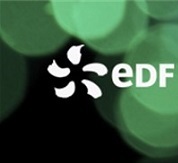What's behind the label: how an EPC label change hides the full range of possible retrofits
Résumé
The French Energy Performance Certificate (EPC) is used to define long-term energy performance targets for residential buildings: improving the energy label to at least the B label.
However, these objectives described in terms of EPC label do not allow us to describe and quantify the extent of energy renovation that is required. The aim of this study is to explain the kind of retrofit and its cost using a statistical approach, with two explanations: the nature of the technical measures and their cost. As an example, we will present the results for achieving high-efficient renovation (label A or B) for all the initial EPC labels.
To do this, we use the French EPC method in its 2021 version to determine all the possible combinations of retrofit package described as compatible with all the possible EPC label changes. For each retrofit package, the calculation determines the energy consumption after retrofit, based on the standard EPC calculation, the new energy label obtained, and the investment required per retrofit measure.
To study label changes, the calculations are based on 2,300 homes described in a public survey. With a maximum of 8 retrofit measures per renovation package studied, we have a combination leading to a total of around one million calculations for all the dwellings studied. We then carry out a statistical study of the costs of the retrofit package calculated in this way.
Overall, the cost of high-efficient renovation is in the range of €200 to €350/m² of living space (direct cost), depending on the type of property, the initial EPC class and the final level achieved. As expected, the lower the initial performance of the building, the higher the cost of high-performance renovation. For given label changes, there is therefore a "home retrofit package" configuration for which the investment costs are minimal and configurations with very high costs, but which correspond to rare combinations. The knowledge of what is behind the EPC label change clarifies energy efficiency policy objectives in terms of technology and the type of retrofit possible and/or necessary, particularly for the building industry and the introduction of targeted financial incentive.
| Origine | Fichiers produits par l'(les) auteur(s) |
|---|

